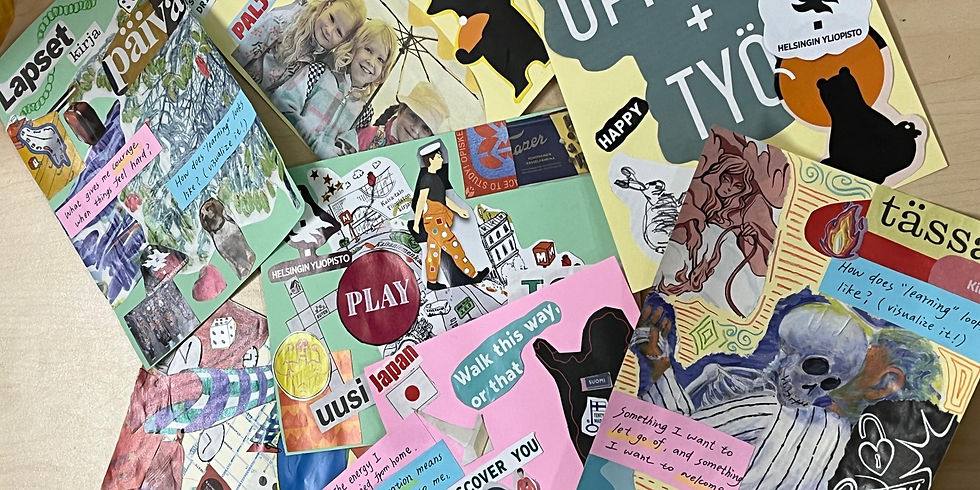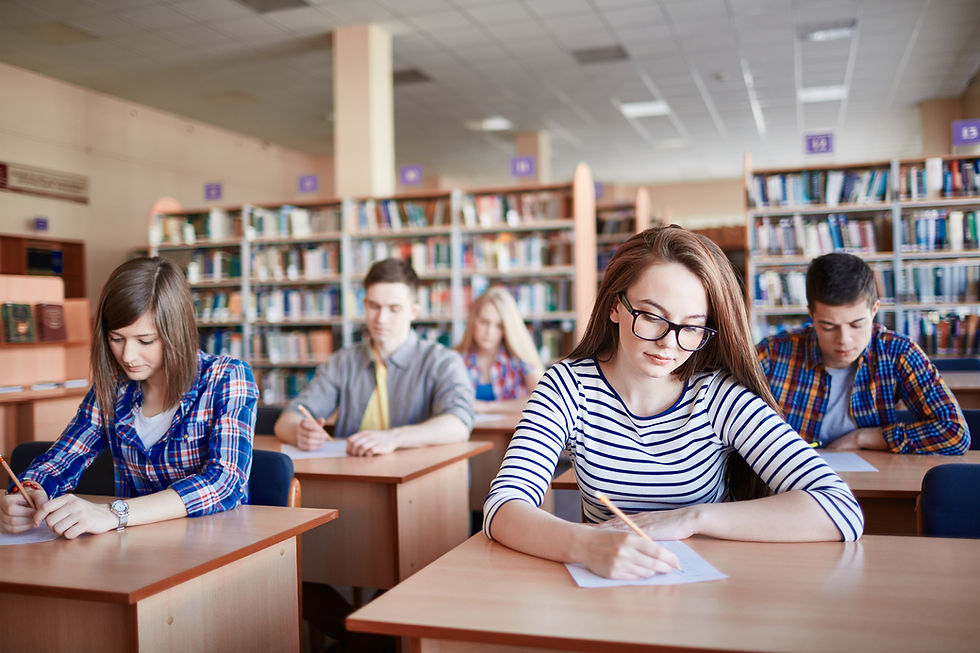Meditation and learning: Neurobiological aspects of meditation in learning
- Drashtiben Bhatt

- Dec 1, 2022
- 4 min read
This article is about daily meditation's effect on different educational institutes' different ages. This article is based on Munich University’s experiment of meditation in educational institutes for 10 years.
In Eastern cultures, people are practising meditation for centuries. In the western world, the practice of mindfulness is spreading rapidly in the last decade. Mindfulness is a state of mind which can be achieved by meditation. Meditation is practised in Hindu, Buddhist, and Taoist traditions as a path to finding the inner self through a higher level of consciousness.
Plenty of research material supports the practice of meditation as a pedagogical method in education (Barbezat & Bush, 2014; Berila, 2016; SimmerBrown & Grace, 2011). The practice of meditation can reduce stress & anxiety and improve attention in students, as proven by research conducted in neuroscience & psychology (Kabat-Zinn, 2013; Newberg, 2014; Singleton et al., 2014). Meditation in schools can reduce violence & bullying in schools. In research, the effect of meditation can be observed in physiological, psychological, physical, affective, and cognitive domains (Newberg, 2014; Ramli et al., 2018; Simmer-Brown & Grace, 2011).
Mindfulness is a conscious practice to know own self, observe inner experiences, and feel inner emotions & thoughts. Through brain imaging scans this study concluded that daily practice of mindfulness meditation can improve the health, well-being & performance of kids at school and adults in the workplace (Bhanoo, 2011; Orme-Johnson, 2006, Micucci, 2005). Educational researchers also concluded same that meditation can improve focus, attention, openness, and awareness in learning (Barbezat & Bush, 2014; Behmer, 2019; Berila, 2016; Compson, 2011). This research was carried out on undergraduate & graduate students of different disciplines like anatomy, social justice, and environmental courses. From that experience (Behmer,2019) concluded that meditation can bring transformation in an individual. Berila (2016) concluded that meditation can bring improvement in the expression, reflection & discussion of complex topics of social justice.
Sun practised daily meditation in her face-to-face classes for relaxation. By doing that she observed that students become more aware of themselves, more comfortable in the discussion & sharing of information, focused, and overall improved in the learning community.
Kalpna Gupta’s research says that the limited use of meditation as a therapy is not enough, but educational institutes may integrate meditation into the curriculum as a valuable pedagogical method. She also described that still more research in this field is required.
The neurobiological effect of meditation can be found by studying structural & functional changes like the increase & decrease of grey and white matter in the brain. Molecular-level changes can be found by checking the quantity of dopamine, melatonin, and serotonin in the brain. The following three studies are showing the effects of meditation on different parts of the brain:
They consistently found greater activation in frontal, parietal, occipital/temporal cortices, and hippocampus, while less consistently they observed that, greater activation in the cingulate cortex and other subcortical regions in meditators compared to control (non-meditators). (Lutz et al. 2008; Brefczynski-Lewis et al. 2007; Holzel et al. 2007). Pagnoni and Cekic (2007) found that age-related grey matter decaying in the left putamen is very less in meditators than in non-meditators (control).
Experiment at the Munich University of Germany
The practice of meditation has been done for 10 years as a part of the curriculum. After those 10 years, they shared their experiences in a book. Some points of that book are below:
Meditation is not just providing relaxation to the mind but changing the entire functionality of the brain.
They applied meditation practice at childcare centres and schools. While in university for students, staff, and alumni.
After they practised mindfulness in preschool and daycare centres, they observed that children are friendlier and more positive with each other. Children are more respectful of each other and quarrel less with each other. Children started playing peacefully.
When practising mindfulness in schools with children, students said that some of them felt balanced by doing meditation.
After practising mindfulness in university, students sum up the conclusion “Only those who experience themselves can truly develop their potential to lead a self-determined, successful, and happy life.”
Conclusion
According to the above studies, the practice of meditation can change our brains structurally and functionally. It might also help in delaying the ageing process of the brain. Meditation can also relax the brain of students to make them more concentrated on studying and better behaviour socially with other students. Still, more research is needed to know the effect of meditation on young kids.
------------------------------------------------------------------------------------------------------------------------------------------------------------------------------------------------------------------------
Bibliography:
1. Barbezat, D. P., & Bush, M. (2014). Contemplative practices in higher education. Jossey-Bass.
2. Behmer, P. M. (2019). Moving to learn: A meditative yoga approach to teaching and learning anatomy and physiology in multiple contexts. In L. Tisdell, K. Gupta, & K. Archuleta (Eds.), Meditation and mindfulness in adult education. New directions for adult and continuing education (Vol. 161, pp. 67–77). Jossey-Bass.
3. Berila, B. (2016). Integrating mindfulness into anti-oppression pedagogy. Routledge
4. Kabat-Zinn, J. (2013). Full catastrophe living. Bantam Books. Kolb, D. A. (2014). Experiential learning: Experience as the source of learning and development. FT Press.
5. Brefczynski-Lewis, J.A., A. Lutz, H.S. Schaefer, D.B. Levinson, and R.J. Davidson. 2007. Neural correlates of attentional expertise in long-term meditation practitioners. PNAS 104(27): 11483–11488.
6. Bhanoo, S. N. (2011, January 28). How meditation may change the brain. http://well.blogs. nytimes.com/2011/01/28/how-meditation-may-change-the-brain/Orme-Johnson, D. W. (2006). Comparison of techniques. Truth About TM. http://www.truthabouttm.org/truth/TMResearch/ComparisonofTechniques/index.cfm
7. Hölzel, B.K., U. Ott, H. Hempel, A. Hackl, K. Wolf, R. Stark, et al. 2007. Differential engagement of anterior cingulate and adjacent medial frontal cortex in adept meditators and non-meditators. Neuroscience Letters 421(1): 16–21. doi:S0304-3940(07)00451-X [pii] 10.1016/j.neulet. 2007.04.074 [doi].
8. Ramli, N. H. H., Alavi, M., Mehrinezhad, S. A., & Ahmadi, A. (2018). Academic stress and self-regulation among university students in Malaysia: Mediator role of mindfulness. Behavioral Sciences, 8(1), 1–12. https://doi.org/10.3390/bs8010012
9. Sun, Q. (2019). Eastern thoughts, Western perspectives: Meditation and mindfulness relaxation activities for learning and well-being in adult and higher education. In L. Tisdell,
10. K. Gupta, & K. Archuleta (Eds.), Meditation and mindfulness in adult education. New directions for adult and continuing education (pp. 161, pp. 45–55). Jossey-Bass.
11. Lutz, A., J. Brefcyznyski-Lewis, T. Johnstone, and R.J. Davidson. 2008. Regulation of the neural circuitry of emotion by compassion meditation: Effects of meditative expertise. PLoS One 3(3): 1–10.
12. Pagnoni, G., and M. Cekic, 2007. Age effects on gray matter volume and attentional performance in Zen meditation. Neurobiology Aging 28(10): 1623–1627. doi:S0197-4580(07)00243-6 [pii]10.1016/j.neurobiolaging.2007.06.008 [doi].
13. Book: By Andreas de Bruin “MINDFULNESS AND MEDITATION at University 10 Years of the Munich Model”
------------------------------------------------------------------------------------------------------------------------------------------------------------------------------------------------------------------------

Kids’ behaviour and the reasons behind their behaviour always make me curious. As a freelance writer, I am writing in different niches like parenting, educational science, spirituality, and pregnancy-related matters.
Key Words: Meditation, Neuroscience, Education, better learning
------------------------------------------------------------------------------------------------------------------------------------------------------------------------------------------------------------------------




Comments